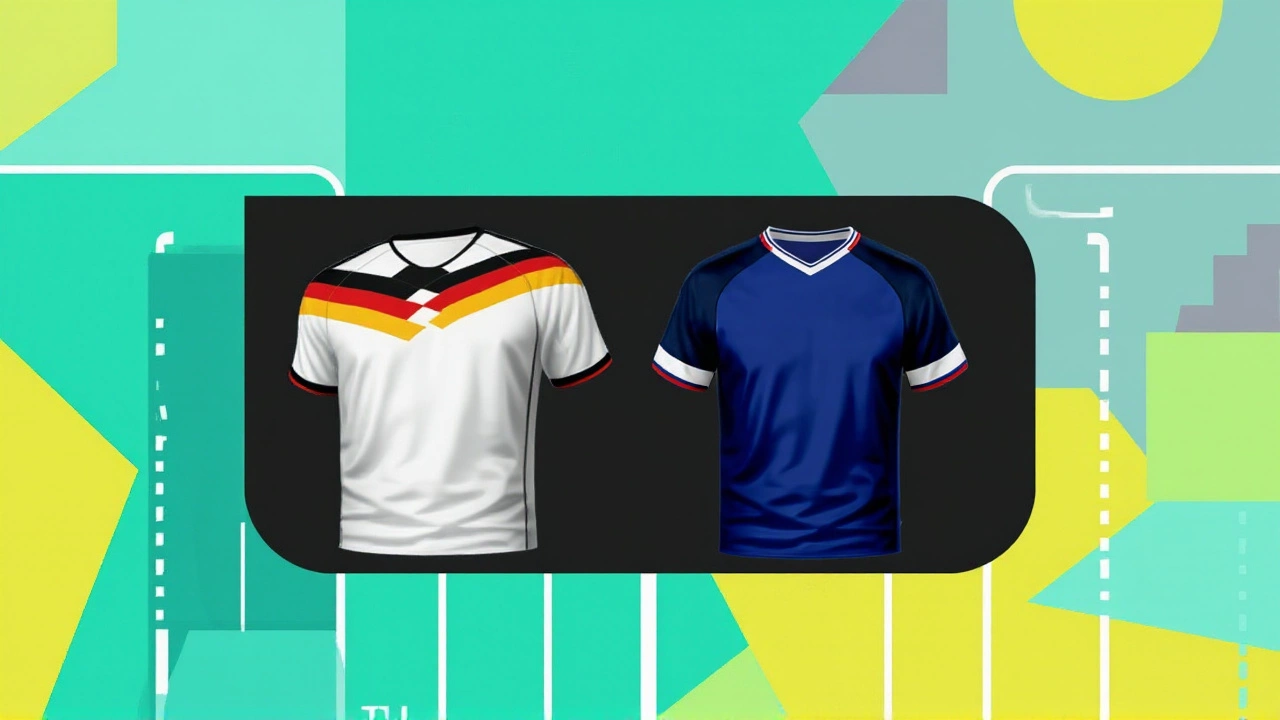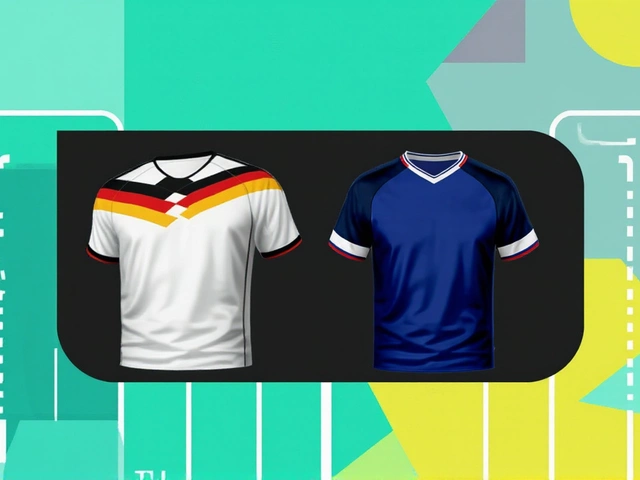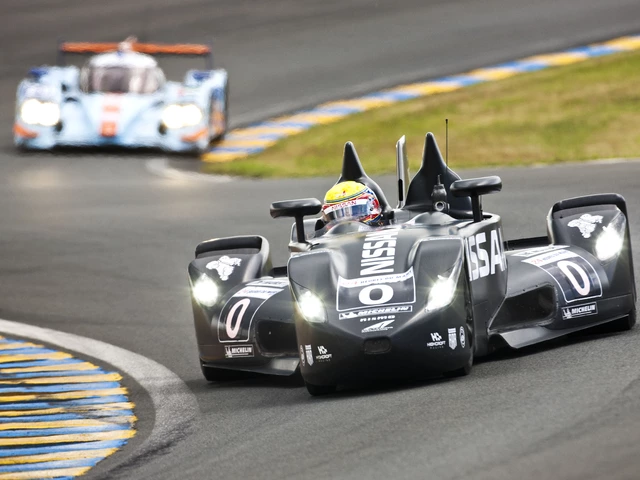Germany sealed their place at the 2026 FIFA World Cup in stunning fashion, demolishing Slovakia 6-0 on November 17, 2025, at the Red Bull Arena in Leipzig. The win wasn’t just a formality—it was a statement. After losing 2-0 to Slovakia in Bratislava back in September, the Germans had to respond. They didn’t just respond. They obliterated. With this result, Deutscher Fußball-Bund (DFB) secured their 20th consecutive World Cup appearance, a streak stretching back to 1934. The match, played in 42°F winds, felt more like a coronation than a qualifier.
A Redemption Arc Written in Goals
Just two months earlier, Germany’s World Cup hopes looked shaky. Losing to Slovakia—only their fourth-ever qualifying defeat—sent shockwaves through the squad. But Julian Nagelsmann’s team didn’t panic. They rebuilt. They refocused. And over the next four matches, they won every single one. The 2-0 win over Luxembourg on November 14 was a warm-up. This? This was the finale.
It started early. In the 18th minute, Nick Woltemade, the 22-year-old Newcastle United striker making his second start for Germany, rose above two defenders to head home a Florian Wirtz corner. Acrobatic. Clinical. A sign that the goals were coming. By the 29th, Serge Gnabry made it 2-0, latching onto a perfectly weighted pass from Leon Goretzka and sliding it past Martin Dúbravka. Then came Leroy Sané. Two goals. First, a low, curling finish after a Wirtz through-ball. Second, a first-time rocket over Dúbravka’s shoulder. By halftime, it was 4-0. Slovakia didn’t just lose—they were dismantled.
The Substitutes Finished the Job
Even when the starters sat down, the dominance didn’t stop. Ridle Baku, the VfL Wolfsburg right-back, came on and scored in the 67th minute with a driving run and low finish. Then, Assan Ouédraogo of FC Schalke 04, a 21-year-old midfielder who’d barely featured internationally before, capped the rout with a calm strike in the 82nd. Six goals. Zero response from Slovakia. The scoreboard didn’t lie.
Key players like captain Joshua Kimmich and center-back Nico Schlotterbeck returned from minor knocks, adding steel to a team that had looked vulnerable in Bratislava. Meanwhile, defenders Valdemar, Anton, and Riedler Baku were left out—evidence that Nagelsmann was playing for results, not sentiment.

The Numbers Don’t Lie
Germany finished UEFA Group A with 15 points from six matches: five wins, one draw, zero losses. They scored 10 goals, conceded just 3. Three clean sheets. Slovakia? Also 12 points. But goal difference killed them. They’d scored 6, conceded 1. That’s a solid defense. But against Germany, it wasn’t enough. Not even close.
Woltemade, once a fringe player with zero goals in his first five caps, finished as Germany’s top scorer in qualifying with three goals in just two starts. That’s the kind of story you don’t script. And the betting odds? Germany was a -461 favorite. The final score? Even worse than the bookmakers feared.
What This Means for 2026
This win isn’t just about qualification. It’s about identity. After years of rebuilding, Germany is starting to look like the team the world remembers. The midfield—Wirtz, Goretzka, Kimmich—is electric. The attack—Sané, Gnabry, Woltemade—is terrifying. And Nagelsmann? He’s finally got the squad to match his ideas.
Now, the real test begins. The 2026 FIFA World Cup kicks off June 11, 2026, across 16 cities in the United States, Canada, and Mexico. Germany will be among the favorites. But this win in Leipzig? It wasn’t just about securing a ticket. It was about sending a message: the old powerhouse is back.

What’s Next for Slovakia?
Slovakia’s campaign ends in disappointment. They won four of their six matches and kept four clean sheets—impressive. But they lacked the firepower to challenge the elite. Their 2-0 win in Bratislava now feels like a fluke. Their next steps? A new coach. A new generation. And a long road back to relevance.
Frequently Asked Questions
How did Germany bounce back after losing to Slovakia in September?
After the 2-0 defeat in Bratislava, Germany won their next four qualifiers, including a 2-0 win over Luxembourg just three days before the Slovakia match. Julian Nagelsmann shifted tactics, prioritizing midfield control and wing play. Key players like Kimmich and Schlotterbeck returned from injury, and younger talents like Woltemade and Ouédraogo seized their chances, turning a shaky campaign into a dominant run.
Who was the standout player in the 6-0 win?
Leroy Sané was the most dangerous, scoring two goals and creating multiple chances. But Nick Woltemade’s emotional opener set the tone, and Florian Wirtz’s vision—five key passes, two assists—was the engine. Statistically, Wirtz led the team in chances created, while Sané and Gnabry combined for four goals. It was a team effort, but Wirtz and Sané were the architects.
Why is Germany’s 20th consecutive World Cup appearance significant?
Germany is the only national team to qualify for every World Cup since 1934—89 years and 20 tournaments straight. No other country has come close. Even Brazil, with seven titles, missed the 1966 finals. This streak reflects institutional strength, youth development, and consistency most nations can only dream of.
What does this result mean for Slovakia’s future in international football?
Slovakia’s run in qualifying was respectable, but the 6-0 loss exposed their limits against top-tier teams. They’ll need to replace aging stars like Marek Hamšík’s successors and invest in youth. Their next opportunity comes in the 2028 UEFA Nations League, but without a major tournament in 2026, momentum is lost. A rebuild is inevitable.
How did weather conditions affect the match?
At kickoff, temperatures were 42°F with 6 mph northwest winds. While chilly, it didn’t hinder Germany’s high-tempo play. In fact, the firm pitch and cool air may have helped the ball move faster, aiding their quick transitions and precise passing. Slovakia, less accustomed to such conditions, struggled to adapt, especially in the second half.
What’s next for Julian Nagelsmann’s Germany team?
Germany will begin preparing for the 2026 World Cup with a series of friendlies against top-ranked teams in March and June 2026. Nagelsmann will test his squad’s depth, especially in central defense and backup midfield roles. With the tournament in North America, they’ll also study climate and travel logistics. The goal? Not just to qualify, but to lift the trophy.








Write a comment